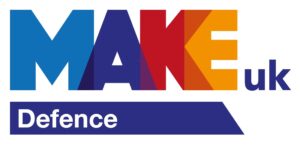Technology to reduce the spread of COVID-19 is being explored. With lockdown restrictions lifted, gamification is being considered. Gamification is used to inspire behaviours like weight loss or exercise; gamification can encourage activities by focusing on the achievement of individual goals.
A Chinese app displays the health status of an individual by a coloured badge representing:
- Green – the ability to freely travel and;
- Yellow or Red – indicates alert the authorities.
The app’s transparency and data collection create some concerns, similar apps, that are transparent might work better elsewhere.
Schools and workplaces are reopening; social interaction is resumed, an approach to minimising the risk of COVID-19 transmission is required. Technology solutions that automate monitoring, maximising individual freedoms, and concurrently enable infection-reduction strategies, are needed.
The two types of paths to using technology to fight COVID-19 are:
- Proactive – encouraging behaviours to prevent spread, manage social distancing and promote hygiene;
- Reactive – focusing on post-incident activity, such as contact tracing and quarantine enforcement.
Singapore’s Trace-Together app uses Bluetooth to trace interactions between app users; data is stored on phones, in the event of a positive result, authorities use the data to alert those potentially exposed.
Contact tracing counts the total number of close contacts. Reducing and containing virus spread requires restricting the number of social interactions to a level within the healthcare system’s ability to cope.
Gamification offers the opportunity to encourage conduct, like hand washing, that is important and skip less essential behaviours.
As lockdowns recede, contact tracing becomes the key to reducing transmissions; additional app functionality in the future could focus on gamification to encourage specific behaviours, reduce social interaction, curb the spread of infection, encourage preventative actions, and reduce transmission altogether; including:
- Social Distancing – the app will score for how well a user has minimised and award points for behaviours like visiting locations during off-peak hours or exercising with friends as opposed to dinner in a crowded restaurant.
- Personal hygiene – the app reminds users to wash their hands regularly, rewarding for disinfecting door handles or using hand sanitiser in public places.
- Screening – it’s possible to reward low-risk individuals with access to specific locations and offer those at higher risk access only to essential places such as food stores or pharmacies.
Gamification will allow a choice to participate in the activities that are a high priority and waive those less important. Users can be provided with a budget of social contacts to self-manage.
ICT is widely used to combat and contain COVID-19, such as:
- Breathing Equipment – Lombardy, Italy, reported that 50% of patients oxygenated through Continuous Positive Airway Pressure (CPAP) devices had avoided the need for invasive mechanical ventilation. Mercedes Formula One and University College London engineers and clinicians collaborated to build a CPAP breathing apparatus that thrusts oxygen to the lungs without a ventilator; 70% less oxygen is needed. Mercedes’ Formula One repurposed its entire facility in Brixworth, UK, to meet demand, using an open-source design that other companies can reproduce.
- Contact Tracing – Tracking the spread of the virus is shown to be effective in containing the spread of infection.
- Wearable Technology – Liechtenstein is running a pilot scheme, aiming to fit all citizens with biometric bracelets, produced by a Swiss medical technology company, to track potential COVID-19 cases in real-time and provided an early warning system. Data metrics collected will be skin temperature, respiratory rate and heart rate — the data will be to develop algorithms that can detect the pattern of change in individual physiology and identify likely cases of COVID-19 — before becoming symptomatic.
- Patient Care – Two million COVID-19 cases worldwide place tremendous strain on the medical staff. China uses robots to help nurses perform essential tasks like taking mouth swabs, ultrasound scans, and using stethoscopes. In Italy, robots were used to deliver food and monitor biorhythms.
- Artificial Intelligence (AI) – plays a role during patient care. MIT created a device called “Emerald” to monitor patients with COVID-19 remotely. Emerald monitors patient condition using wireless signals that bounce off their body. Emerald’s algorithms analyse changes in the transmitted signals to record breathing rate, sleep patterns, and movement.
Proposals to track, contain, and fight COVID-19 are coming out nearly daily, some public health strategies, others are personal technical approaches. During the lockdown, many people were enabled by technology to continue virtually. Post lockdown, technology holds great promise in this and future pandemics.
If you enjoyed reading this post and would like to know more about our services, please contact us. We’re always happy to have a no-obligation chat, to see if we are the right law firm to help you.
Barry ET Harris MBE, is an independent consultant; he is a veteran of the British Army; he combines specialist operational experience with wisdom gained from extensive commercial consulting, executive and management expertise in his specialities gained in complex environments and high-risk jurisdictions worldwide.
Need advice?Contact us to discuss your requirements and how we can help







